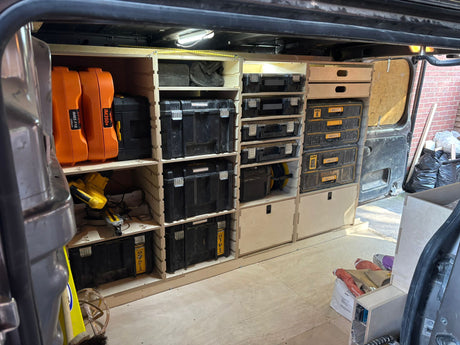Common Scenarios and Prevention Tips
Introduction to Tool Security
In today's fast-paced construction and trade industries, tools are not just investments; they are the lifeline of the work. However, with rising theft rates, securing these essential assets has become more crucial than ever. This post is the first in a series that aims to arm tradespeople with effective strategies, innovative devices, and smart habits to enhance the security of their tools and safeguard their livelihood.
Understanding the Risks: Common Theft Scenarios
Residential Job Sites:
Residential areas, often bustling with various activities, present a unique risk for tool theft. Tools can easily be left unattended or inadequately secured due to the transient nature of residential work, making them prime targets for opportunistic thieves.
Commercial Construction Sites:
Unlike residential sites, commercial sites often store a higher volume of valuable equipment. The organized theft rings see these sites as lucrative targets, capitalising on less frequent monitoring during off-hours to execute large-scale thefts.
Vehicle Break-ins:
Vehicles are the most common target for tool theft. Many tradespeople rely on their vans to store and transport tools, making them a concentrated point of risk, especially when parked in isolated or poorly-lit areas.
Garages and Sheds:
Tools stored in garages and sheds at home are also vulnerable. These areas are sometimes overlooked in terms of security compared to the main home, providing thieves with an easier opportunity to steal without breaking into the home itself.
Protective Measures and Early Conclusions
Understanding these common scenarios helps highlight the importance of proactive security measures. Whether it's improving physical security or incorporating technology, there are numerous steps tradespeople can take to protect their valuable tools. In the upcoming posts, we will dive into specific devices and practices that can significantly enhance tool security.
Consider the security of your own tools and job sites. Are there gaps in your current security strategy that need addressing? Stay tuned for our next posts, where we'll cover cutting-edge security devices and best practices for securing your tools on job sites, in vehicles, and at home.









